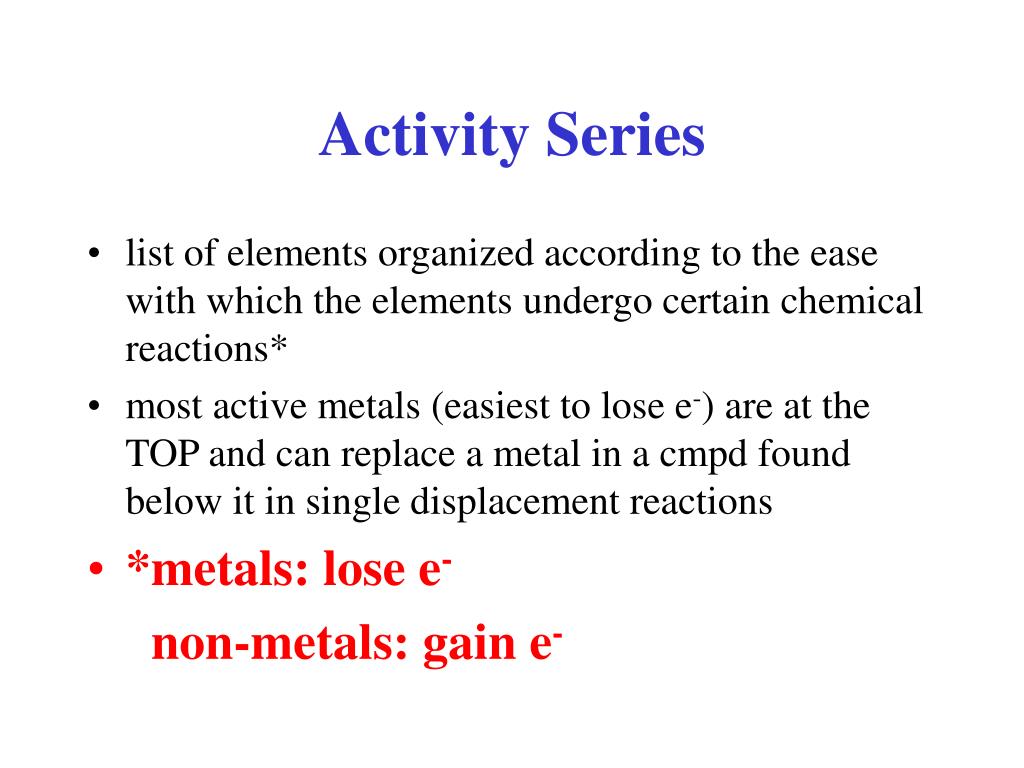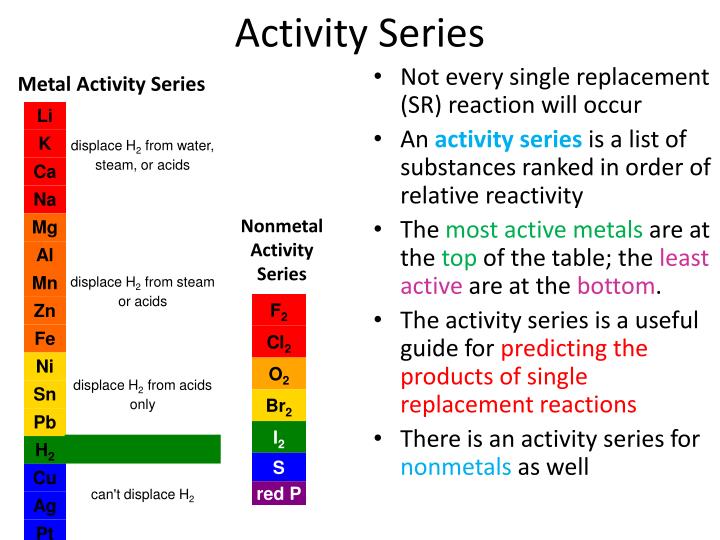
It is used to acquire information on the reactivity of the metals toward water and acids.It is used to predict whether a metal can displace another metal in a single displacement reaction (a reaction in which one element is displaced by another element in a compound).

It allows us to ascertain how the metal will react.
#CHEMICAL ACTIVITY SERIES SERIES#
The reactivity series is useful in several ways: H + (Non-Metal, Reference for Comparison) It must be noted that the metals in Red react with cold water, those in Orange cannot react with cold water but can react with acids, and those in Blue can only react with some strong oxidizing acids. The reactivities of metals in the descending order is given below along with their corresponding ions.
#CHEMICAL ACTIVITY SERIES FREE#
The top of the reactivity series comprises the most reactive elements, which are not available in nature in the free state and the bottom of the series includes the least reactive elements.Here are the salient features of the reactivity series: Salient Features of the Reactivity Series However, metals from Zinc to Mercury can be easily extracted by reducing their oxides, which is comparatively cheaper. Electrolysis is used to extract metals that are placed higher in the reactivity series.On the other hand elements such as magnesium, iron, and aluminium react with steam to form oxides and hydrogen gas. Due to their high reactivity, Potassium, Sodium, Lithium, and, Calcium reacts with cold water to form hydroxides and hydrogen gas.But, different metals have different reactivities toward oxygen such as gold, which is an unreactive metal and doesn’t readily form oxides when exposed to air. Most of the metals react with oxygen to form metal oxides.Higher ranking metals generally show a more metallic nature than that placed lower in the series.The higher the metal placed in the series, the more reactive it is and the more strongly it reacts with water, oxygen, and acid.Reactivity series can be used to predict if a metal can displace another in a single displacement reaction.



Reactivity series of metals, also referred to as the activity series, is the arrangement of metals in the descending order of their activities.


 0 kommentar(er)
0 kommentar(er)
